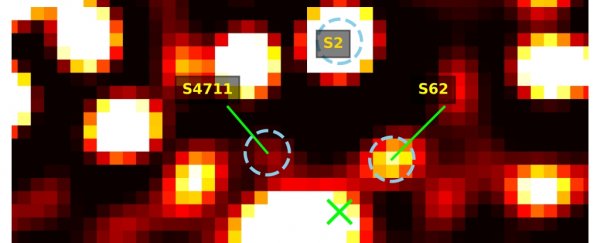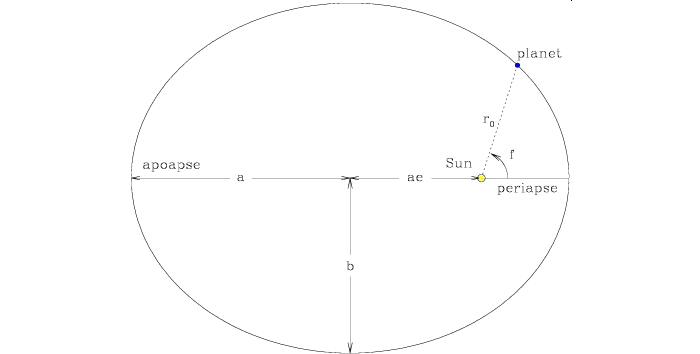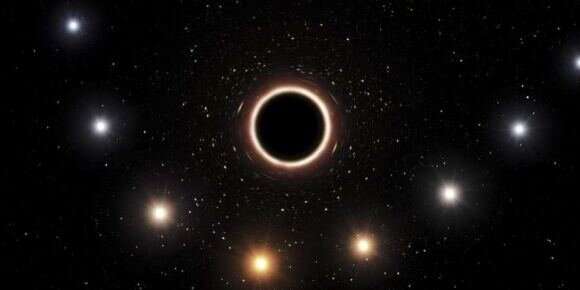This star is the fastest in the Milky Way, traveling at a speed of 8% the speed of light.
We have found the most fastest stars in the Milky Way. A nearby star, S4714, has been found to revolve around the supermassive black hole, Sagittarius A*. Located in the harsh environment at the center of the Milky Way, the star is a candidate for gravitational wave sources.

S4714 attains a wondrous velocity of 24000 km/second (15000 miles/second) in its orbital passage, somewhat 0. 08c (the speed of light). This is 8 percent of the speed of light. But what is even more extraordinary is where my story takes a turn to the good.
Among a group of star bodies that includes S4714, it has been discovered that exactly they are the ones that spend closest to Sgr A* without the parallel having encountered of any other stars in shorter orbits than theirs.
This discovery not only raises the possibility that there are even more stars circling the supermassive black hole in our galaxy on risky orbits, but it also provides the first candidates for a kind of star that was first proposed almost 20 years ago: stars moving too close to a black hole that they suffer ‘squeezing’ caused by its gravitational field. Astronomers call such objects ‘squeezars’.
The Milky Way’s center is there where it is quieter than in the centers of the other galaxies where matters are more active. But around a quiet black hole gathering in the non-active state, you can get entertained quite easily.
Really the scenarios are great many! It has been found that a few stars in the neighborhood traverse elliptical long shaped orbits around Sgr A*; it is like an oval with the black hole on one end!The astronauts will find the stars in this way, how astronomers did to identify them. We can do that by means of those stars which are known as S stars, to study the properties of that colossal-size unknown thing they revolve.

S2 was speculated to be the most proximate star and in the neighbourhood of the black hole for numerous years. It took the probe to get to the supermassive black hole at the Galactic center, the closest approach was around the distance of 18 billion kilometers above Sgr A*. Colliding with the supermassive black hole, the star acquired a speed of 3% times light of speed due the gravitational impulse that took place. We found out this pattern with relentless attention to detail and determination to complete this task.
Thus, the participants of the Sparse GENCOS project headed by the German astrophysicist Florian Peissker of the University of Cologne, found S62, a faint and closer star, in the next year.
On a 9. It remains on a 9-year orbit; at the end of which it almost egresses Sgr B* with a periapse distance of 2. 4 billion kilometres. The distances from our star to the Sun are much less compared to those of Uranus since the Sun’s mean separation is only 1. 88 AU. It covers a distance of 12. 400 million kilometers (20,000 km/hour) per second. 7% of the velocity of the speed of light (C) as it encircles.
Peissker and the rest of the member were far from giving up their mission. Years of study have been capably crowned with the discovery of five additional stars that are closer than the star S2, thus this star is S4711, S4712, S4713, S4714, and S4715, respectively.
“It gives me pleasure that I was able to carry out observations and science with the Very Large Telescope in the Galactic center during the last 7 years,” Peissker said to Science Alert the by stream.
“Studies of nebulae such as the Orion nebula enabled me to learn how to use spectra for the first time, on the SINFONI (near-infrared). “Although data-reduction techniques, clear vision, good luck, and patience are necessary, they are insufficient to ensure success. The filtering type is, again, a significant element which we must master, including high-pass and low-pass filters. ”
Among the four newcomers, S4711 and S4714 are the ones that captivate the crowd the most.
Since the periapsis of the planet is just 21. C-type S4711 blue starlaying 150 million years old, rotating around supermassive black hole of a galaxy called Sagittarius A*, at a distance of 5 billion kilometers, is the 7th planet on the list of farthest planets. 6 easing years, except S62, has a much shorter orbital period than that.
Its closest passage might be not that much, but its shorter orbit could mean that throughout the course of its orbit it is the object which has the closest mean distance with the black hole that we know of so far.
S4714, also, happens to have a significantly more unusual orbit, which lasts 12-year, and, in other words, it is the eccentricity of S4711’s ellipse shape, which is exceedingly elongated – as elongated as an elliptic stable orbit can be, apparently. The eccentricity values of orbits extends from 0 of perfect circle to 1, which denotes escape orbits in perspective. The orbital eccentricity of S4714 is as a value constrained in the semiaxis plane within the surface density of its probable host galaxy. 985.
It settles down to the headed of S62 at periapse, but fleets by Sgr A* within a radius of a few light-minutes. It took Voyager 9 billion kilometers (1. 2 billion miles) to reach the edge of the solar system and beyond. The star passes 3. 9 million km from the black hole with the maximum acceleration of 24,000 km/s. However, the acceleration wanes when the star retreats again from the black hole and its distance extends up to 250 billion km.
This group of stars that are way too hot can be the first candidates that may become real winners for the so called squeezars, which was originally thought of, way back in 2003.
Another class of stars with orbit eccentricities in excess of 0. 9, being around the giant black holes were suggested by Tal Avner and Mark Morozows, an astronomers. One portion of the star’s energy close to its perigee is absorbed by the tidal stress consequently is being converted into heat. However, it does increase the star radiation through a degree brighter cause and it also quickens the star’s deceleration. The term used for such stars is the quasars. To put it bluntly, they are among the dead stars whose orbital phases ought to be the point of reference.
“Among the ones expected to make the cut are S4711 and S4714 (zone squeezers),” according to Peissker. “My conclusion will be: S4711 is highly probable because orbit is in accordance with Tal Alexander’s predictions made back in 2003. Therefore S4711 is the first discoverable acoustic signal in a form of the artificial radio signal also called squeezar.
Such stars will be inspected closely to see if they help come up with an answer to the question on how black holes interact the spacetime they (finally) swallow. Nevertheless, it is true that VR provides an extra possibility.
Firstly, we have researched general relativity with S2 that can be illustrated by the process of S2 designing. Other than the strains, in some of the toughest tests previously, the theory has been proven right, being the way the star’s light stretches when there’s a black hole nearby and by the way the orbit changes.
“What it actually means is that we are only a magnitude away from Sgr A* and we are moving much faster, almost four times quicker than S2 was going when it had its pericenter passage,” Isabella stated. “As a result, we have a stronger gravitational effect on S62, S4711, and S4714 stars and also on S2 as it was passing through its
As SINFONI hasn’t been in use since being out-of-order, these tests will not have been conducted yet, therefore it may take some time until the observations get done. Kepler is not inactive however, by astronomers it is monitored.
Fly to the nearest stars now and tomorrow continues because we are still having the search. It is not just the gravitational field around Sgr-A* that might be producing these unusual orbits and velocities; the unexplored territory around it could be home to objects that move in these kinds of bizarre orbits too, but fortunately, in the next few years, thanks to the launch of telescopes with more power, like the Extremely Large Telescope, we should be able to detect them
Last but not least is the fact that every battle ends in an uneqivocal victory for time.
Peissker ended it with a winky face emoji indicating that the situation was a very likely scenario and she always finds time to focus on the galactic context. “It is as if the Universe offers us the best toys ever and scientists enjoy playing with them”.
Astrophysical Journal carries the scientific article.
Do not forget to share your opinion with us to provide you with the best posts !




0 Comments